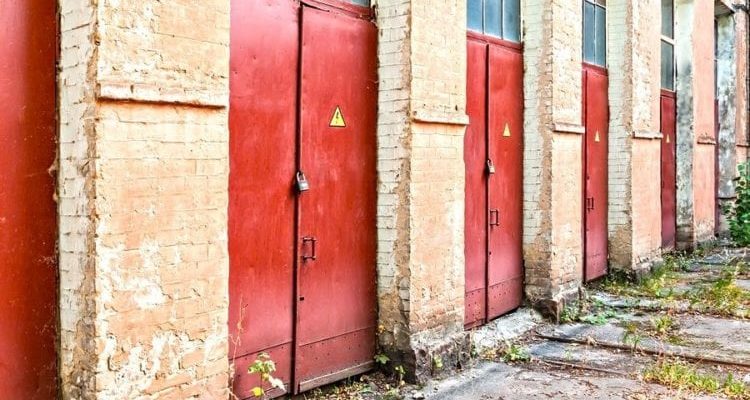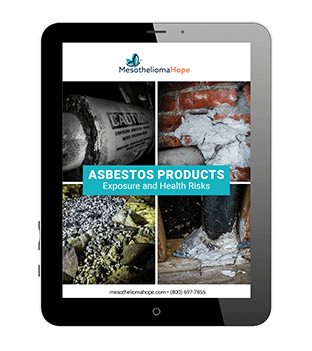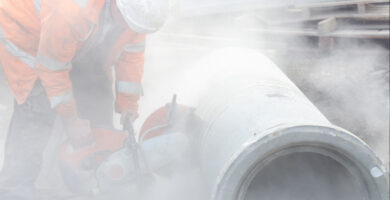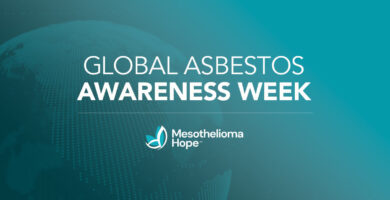Asbestos has been partially banned in the United States since the 1980s—but not entirely. While some federal asbestos regulations exist, individual states have passed their own laws aimed at keeping workers and residents safe.
California – Setting the Standard
Today, California is one of the top states for keeping citizens safe from asbestos exposure. These rigid requirements are one step in making up for the state’s infamous asbestos history—a legacy that’s responsible for the deaths of thousands of Californians from asbestos-caused diseases.
California sets the bar high in several respects. The state’s Title 8 industrial regulations outline definitive actions for dealing with asbestos. For example, it provides the exact wording for construction site warning signs about asbestos danger.
Furthermore, employers must carry out 10 specific steps to adequately inform workers about the risks associated with asbestos.
North Carolina – Renovation and Demolition Requirements
North Carolinians were wrongfully exposed to asbestos for many years at military bases, factories and other structures across the state. While asbestos has largely been phased out in recent decades, these old buildings still contain the hazardous material. Demolitions and extensive renovations must be done safely to protect workers and nearby residents.
The state’s Health Hazards Control Unit oversees construction projects and sets safety standards for building owners and contractors doing renovations and demolitions. Some of the regulations include:
- Structures must be inspected for asbestos before starting work
- Construction leaders must notify the state of any demolition project 10 days before beginning work, even if no asbestos is confirmed
- A permit is required for work that disturbs more than 35 cubic feet of asbestos
- Crews are required to carefully remove asbestos before beginning a major project
- Asbestos must be disposed at an approved landfill
New York – Asbestos Transportation and Disposal
New York was one of the first states to begin using asbestos in the 1900s. Highly and densely populated, the state faces unique challenges in keeping New Yorkers safe from asbestos fibers.
After demolitions, renovations or abatement projects are complete, construction crews must dispose of asbestos according to protocol.
Friable asbestos must be packaged in a sealed container after removal and taken to an approved landfill for disposal. Only a certified contractor is allowed to transport asbestos. If the removed asbestos is combined with other hazardous materials (such as lead), different disposal and transportation rules apply.
Massachusetts – Worker Training and Safety Awareness
Massachusetts is seeing a significant asbestos problem. Its asbestos-related death rate of 6.5 per 100,000 residents ranks well above the national average of 4.9.
The state is also undergoing a housing boom and has taken action to ensure the safety of construction workers.
The Department of Labor Standards launched its Asbestos Awareness Program to raise awareness of asbestos safety on construction sites. It also oversees the licensing of all professionals and organizations involved with asbestos control, including:
- Training providers
- Contractors
- Inspectors
- Asbestos analytical labs
- Asbestos management planners
- Project managers
- Project designers
The program’s website provides lists of currently certified asbestos professionals for building owners and contractors to review. Some professionals must hold a special license to work on schools and other specified structures.
Maryland – Regulation Enforcement
Maryland’s wrongful asbestos use during the 20th century is overwhelming the legal system: over a million asbestos cases have passed through state courtrooms. While the caseload is expected to decrease in future years, the state is taking a tough stance on construction companies that violate asbestos regulations.
Maryland’s House Bill 1262 gives muscle to state departments to enforce asbestos safety regulations. The bill requires construction companies to hire qualified workers who have received proper training and to follow construction site protocols.
Violators of these rules face the following penalties:
- For first offenses, a fine of $5,000 to $20,000
- If settled in court, the minimum reduced fine is $2,000
- For second and subsequent offenses, a fine up to $25,000 and/or imprisonment up to 2 years
Fines received for asbestos-related offenses go directly to the Asbestos Worker Protection Fund.
America has a dark history of asbestos exposure to construction workers that continues to make people sick today. Fortunately, states are taking action to make construction sites and new buildings safe for future generations.










